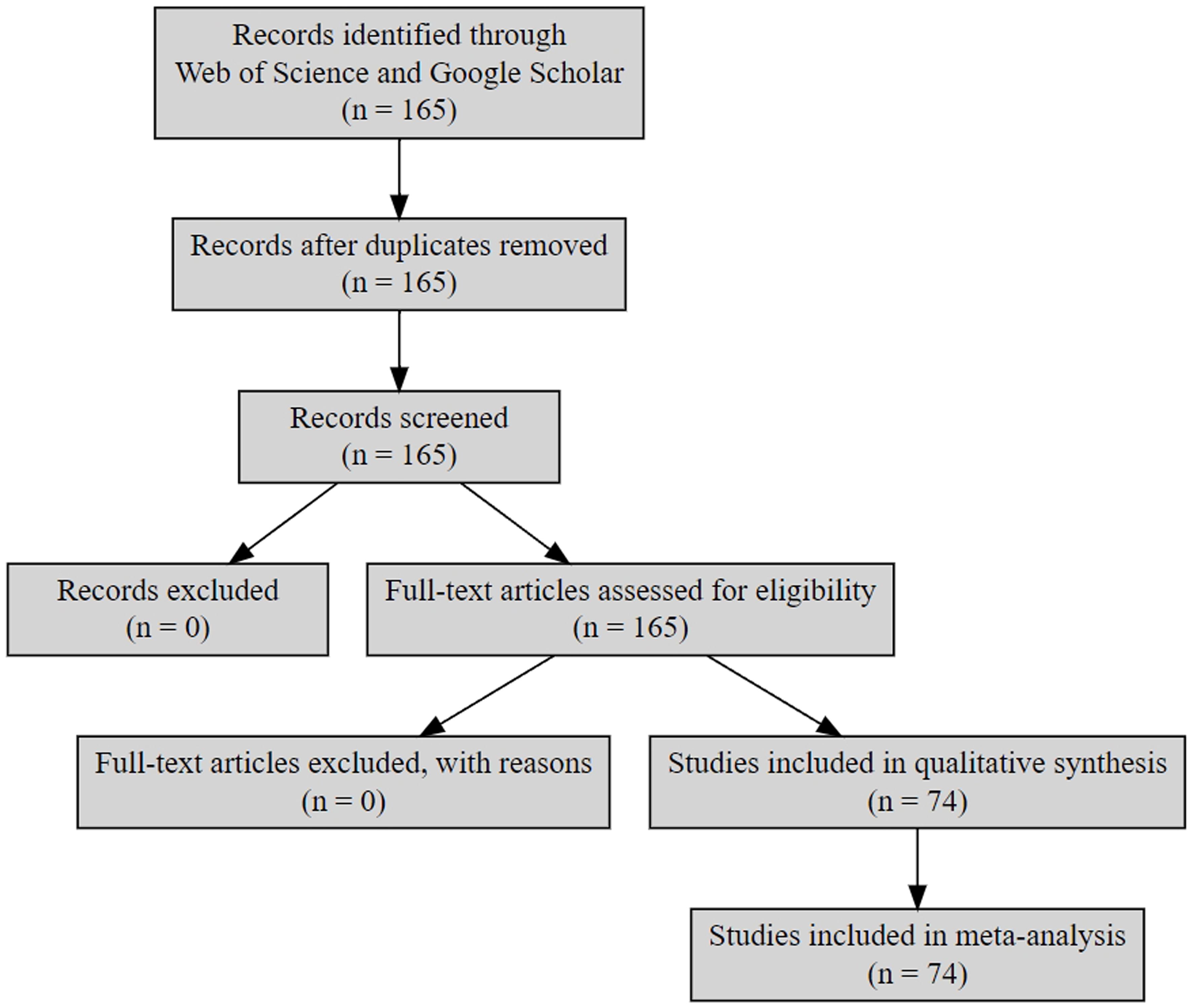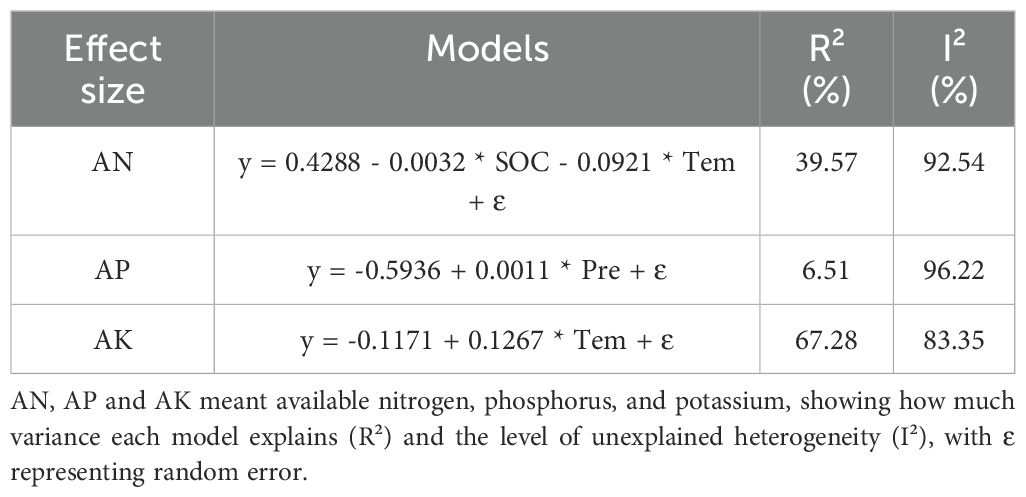- 1School of Ecology and Environmental Science, Qinghai Institute of Technology, Xining, China
- 2Qinghai Provincial Key Laboratory of Plateau Climate Change and Corresponding Ecological and Environmental Effects, Qinghai Institute of Technology, Xining, China
- 3School of Chemistry and Chemical Engineering, Qinghai Normal University, Xining, China
- 4Northwest Institute of Plateau Biology, Chinese Academy of Science, Xining, China
Introduction: Alpine grasslands on the Tibetan Plateau are increasingly affected by grazing, resulting in complex changes in soil nutrient availability.
Methods: This meta-analysis evaluates the effects of different grazing intensities on soil available nitrogen (AN), phosphorus (AP), and potassium (AK), and identifies key environmental drivers.
Results: Results show that grazing significantly increased AN by 11.9% and reduced AK by 14.5%, while its impact on AP was negligible. Light grazing (LG) and moderate grazing (MG) both significantly enhanced AN, with increases of 6.88% and 17.90%, respectively, whereas heavy grazing (HG) reduced AN by 1.52%. LG and MG also positively affected AP, whereas HG caused a substantial decline of 11.04%. In terms of AK, LG led to a slight increase (2.05%), but MG and HG both caused significant reductions of 11.01% and 10.35%, respectively. Temperature emerged as a critical factor, reducing AN and increasing AK, highlighting its importance under climate change scenarios.
Discussion: These findings emphasize that grazing intensity plays a pivotal role in regulating soil nutrient levels, with LG showing the most consistent positive effects on nutrient availability. Thus, managing grazing intensity, particularly favoring light grazing, is crucial to maintaining soil fertility and supporting the long-term productivity of alpine grasslands on the Tibetan Plateau.
Introduction
The Tibetan Plateau provides freshwater, livestock, food, and other ecosystem services to more than 1.5 billion people (1, 2). Recently, air temperature has warmed considerably faster than the global average (3). Moreover, livestock grazing is a dominant economic activity in the Tibetan Plateau (2). Long-term overgrazing has resulted in the degradation of over 80% of the grassland on the Tibetan Plateau (4, 5). Furthermore, an imbalance in soil nutrient elements is one of the major factors driving the degradation of alpine meadow grasslands (6). Consequently, revealing the feedback of soil-available nutrients during grazing is beneficial for the scientific management of alpine meadows (7). Understanding the impact of grazing on soil nutrient availability is crucial for developing urgent strategies to restore and sustain the rapidly degrading alpine meadows on the Tibetan Plateau.
Grasslands are predominantly used for domestic grazing and provide meat and dairy products (8). However, overgrazing occurs in approximately 80.93% of the Tibetan Plateau, causing damage to the grassland ecosystems, grassland degradation, and nutrient loss (4, 9). The available nitrogen (AN) contents were 34.45, 27.34, and 22.40 mg/kg in low-, moderate-, and heavy-grazing meadows on the Tibetan Plateau (9). Continuous grazing substantially decreased the inorganic nitrogen supply capacity and turnover in the alpine grasslands (10). Furthermore, grazing considerably decreased sandy grassland soil available phosphorus (AP) by 15.49% but slightly increased the AN content by 7.14% (11). The available potassium (AK) decreased from 129.70 to 108.77 mg/kg in the southwest of the Tibetan Plateau, likely due to soil compaction from grazing, reduced organic matter inputs, and increased erosion and leaching, which together limit potassium retention and availability in these soils (12). Grazing reduced the AK content by 21.69% in the alpine meadows on the Eastern edge of the Tibetan Plateau (13). However, in the intensive and extensive grazing swards in the Northern Czech Republic, the soil AK contents were 156.47 and 173.14 mg/kg, respectively (14). AN, AP, and AK contents were markedly higher in the long-term livestock camps than in the surrounding areas in the Spanish Pyrenean pasture (15). Overall, the effects of grazing on soil available nutrients were highly variable due to strong spatial heterogeneity, highlighting the urgent need for region-specific research to understand and mitigate the nutrient loss caused by overgrazing on the Tibetan Plateau. Without timely intervention, continued degradation could lead to irreversible damage to both the ecosystem and the livelihoods dependent on it.
Anthropogenic management policies that minimize or exclude grazing can effectively restore degraded grasslands (5). Grazing rest increases grassland production and richness by improving physicochemical and biological properties (10). Furthermore, soil bulk density increases under grazing conditions (12). However, grazing increased bulk density by 2.1 to 8.0% with increasing grazing intensity on the Eastern Tibetan Plateau (16). Increased soil bulk density can reduce the soil’s capacity to retain available nutrients, thereby affecting the fertility and productivity of the soil. This is because higher bulk density can lead to decreased porosity and aeration, which in turn limits the movement of water, nutrients, and air within the soil profile. Meanwhile, pH, air temperature, and precipitation directly influenced the transformation rates of the microbial communities and soil available nutrients (17, 18). Furthermore, the excrement deposited by grazing animals primarily affects sward structure and nutrient cycling (14). Thus, the soil’s physical characteristics and climatic factors drive the soil available nutrients (19). The mechanism behind these effects is primarily related to the disturbance grazing causes to soil structure and the microbial processes responsible for nutrient cycling. Overgrazing leads to soil compaction, reducing porosity and aeration, which hinders the movement of water and nutrients. This compaction limits root growth and reduces the efficiency of nutrient uptake by plants. Additionally, grazing can alter the input of organic matter through animal excrement, which may initially increase nutrient availability but is often offset by the loss of soil structure and increased erosion.
A meta-analysis revealed that heavy grazing depletes soil nutrients and degrades structure in global grasslands, while moderate grazing supports productivity and can enhance soil health (20). Through a meta-analysis, it was revealed that grassland ecosystems in China benefit from light and moderate grazing, which enhance soil nutrients and ecosystem productivity (21). However, despite these insights, research specifically focusing on the Tibetan Plateau—a region highly sensitive to anthropogenic disturbances and spanning approximately 25% of China’s land area—remains limited (9). Thus, exploring the proper grazing intensity is urgently required to increase the available nutrients while maintaining livestock and grassland productivity (2). Two key scientific questions emerge from the study. First, how does grazing intensities in the Tibetan Plateau’s alpine meadows alter the availability of nitrogen, phosphorus, and potassium? Second, how do altitude, precipitation, and temperature interact with grazing intensity to influence soil nutrient availability and regulate grassland productivity? This study aimed to integrate the effect size of grazing on the soil available nutrients and their driving factors in the alpine meadows across the Tibetan Plateau.
Materials and methods
Data compilation
We collected published papers using the keywords “grazing,” “soil available nutrient,” and “Tibet*” in the Web of Science from January, 1990 to June, 2024. Furthermore, 165 articles were selected and conserved to the endnote library (Endnote X9). Full-version papers were automatically added by its function of “find full text” and Google Scholar.
Full articles were subsequently screened based on the following criteria: (1) all studies were conducted, including controls and grazing activity. Grazing intensity is categorized into light, moderate, and heavy grazing according to the classification standards set forth in the paper. (2) Soil AN, AP, and AK were analyzed using the alkali hydrolysis nitrogen method, molybdenum antimony colorimetry, and ammonium acetate extraction flame photometric method, respectively. Some data were extracted from the table, whereas the others were sampled from published figures using WebPlotDigitizer. Herin, we collated the available nitrogen (26 groups), available phosphorus (35 groups), available potassium (13 groups, Figure 1), and 74 sets of field experimental results (Figure 2). Additionally, soil and plant characteristics and climatic factors were collected.
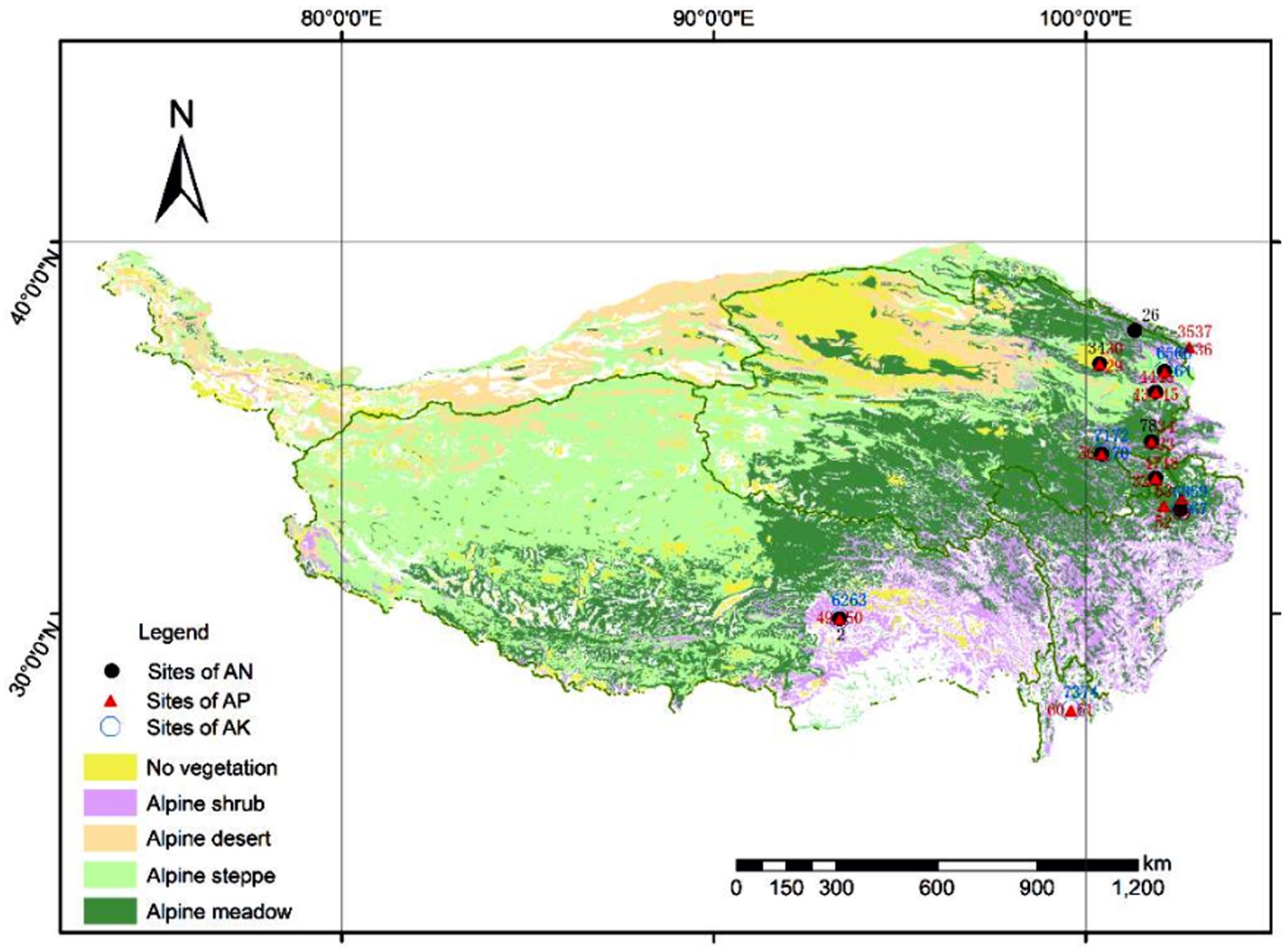
Figure 2. Sites of field manipulations and main vegetation types on the Tibetan Plateau. AN, AP and AK meant available nitrogen, phosphorus, and potassium.
Log response ratios (RR, hereafter response ratios) were calculated as the measures of the effect size. A 95% confidence interval (CI) was calculated. When the 95% confidence interval crosses zero, the result is considered not statistically significant. Meta-analysis using a random-effects model was performed, and the data were analyzed using R.
Xe and Xc are the mean values of each trait measured in the grazed and control grassland respectively. An ln R < 0 reveals a decrease in the trait response to grazing activity; otherwise, it indicates an increasing effect. The variance in ln R is calculated as follows:
Se, Ne, Xe, Sc, Nc, and Xc represent the standard deviations, sample sizes, and mean values in the grazing treatments and control, respectively.
The effect size of grazing on soil available nutrients and confidence interval based on the random effects model were calculated using the following equation:
Individual study weight
Both vi and τ² represent the intra- and inter-study variance, respectively. The total variance of a single case (vi*) = within-case variance (vi) + between-case variance (τ²).
Average effect size
yi refers to the single study effect value
Standard error
95% confidence interval of average effect value: CI = ± 1.96 SE
Publication bias
Biases may exist in publishing negative results in research fields. Therefore, a regression test for funnel plot asymmetry of the publication bias was performed using a mixed-effects meta-regression model (funnel and Egger’s test, rma).
Statistical analysis
Meta-statistical analyses were performed using R 3.6.2, and a random-effects model of the meta-analysis was run in metafor1.9-8 (22). The estimated values and standard errors (rma) were analyzed using the random effects models. A statistically significant difference is indicated when the 95% confidence interval does not include zero. In meta-regressions, total heterogeneity can be partitioned into variance explained by moderators (Qm) and residual error variance (Qe). The Qm statistic, a Q-test, assesses whether moderators account for significant heterogeneity within the data. Specifically, Qm functions as a Wald-type test for model coefficients, where a significant Qm value indicates that moderators contribute meaningfully to variations in effect sizes. A model selection approach was applied using the glmulti package, which evaluates multiple models based on Akaike Information Criterion corrected (AICc) values to identify the best-fitting model. The process involved ranking models by their AICc scores, visualizing these rankings, and examining the weights and summary of the model with the lowest AICc, as well as any additional models with similar AICc values (within a difference of less than 2).
Results
Effect size of grazing on the available nutrients across the Tibetan Plateau
Grazing significantly increased the AN content in the alpine grassland soils, with an effect size of 0.112 (P < 0.05, increase of 11.9%, Figure 3). Conversely, the effect of grazing on AP was not statistically significant, with an effect size of 0.023, corresponding to an approximate increase of 2.4%. Grazing significantly reduced the AK content, with an effect size of -0.157 (P < 0.05, decrease of 14.5%).
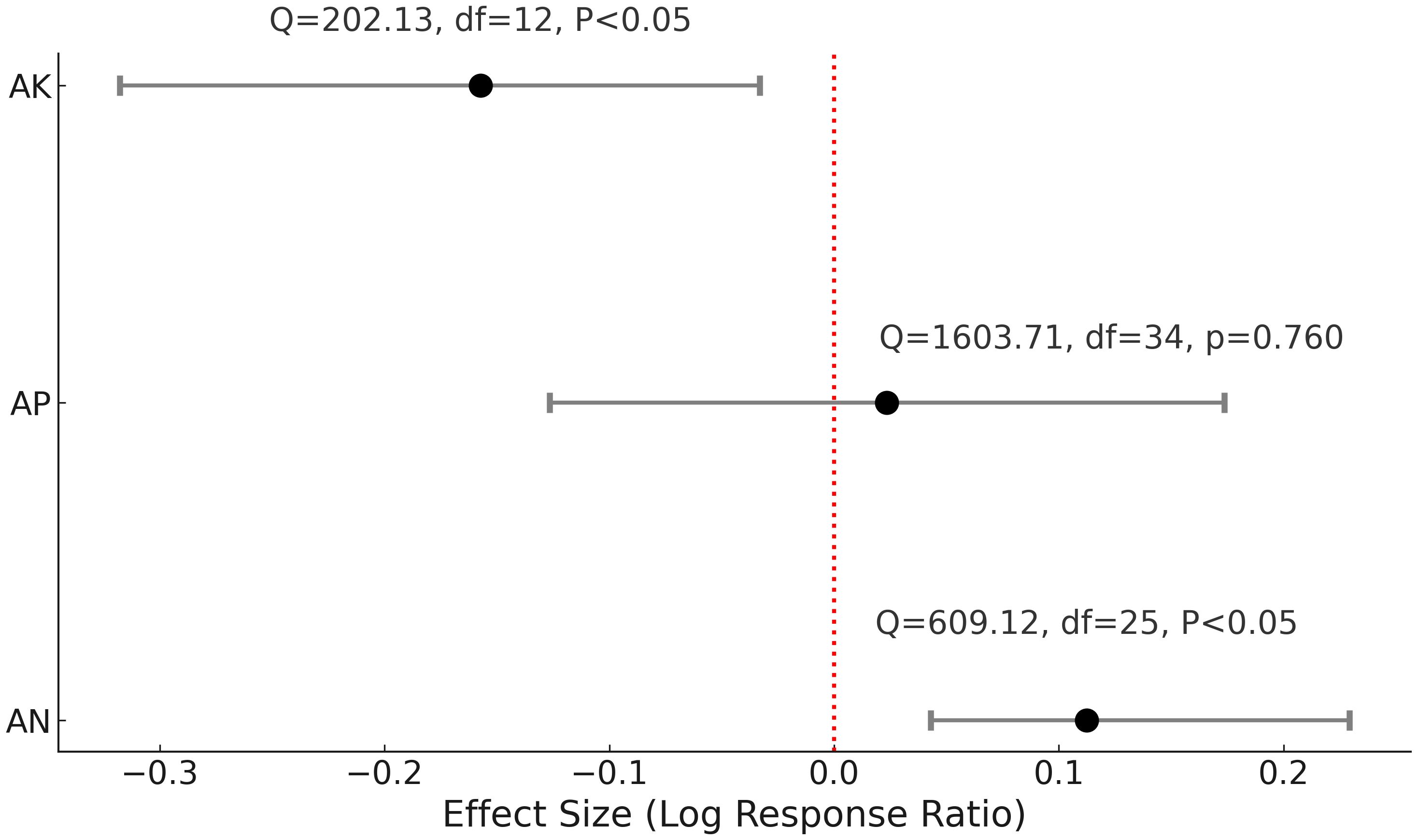
Figure 3. Effect sizes of grazing activities and intensities on grassland available nutrients on the Tibetan Plateau. Effect sizes are presented as the average ± standard error. AN, AP and AK meant available nitrogen, phosphorus, and potassium.
Effect of different grazing intensities on the grassland soil available nutrients
This meta-analysis systematically evaluated the effects of varying grazing intensities on the availability of nitrogen, phosphorus, and potassium in alpine grasslands. The results indicated that both light grazing (LG) and moderate grazing (MG) significantly enhanced soil available nitrogen (AN), with increases of 6.88% and 17.90%, respectively (P < 0.01, Figure 4). Conversely, heavy grazing (HG) exhibited a detrimental effect on AN, with a decrease of 1.52%. Similarly, both LG and MG were found to increase soil available phosphorus (AP), while HG resulted in a substantial decrease in soil AP, approximately 11.04%. Furthermore, LG contributed to a 2.05% increase in available potassium (AK), whereas both MG and HG led to significant reductions in soil AK, with decreases of 11.01% and 10.35%, respectively.
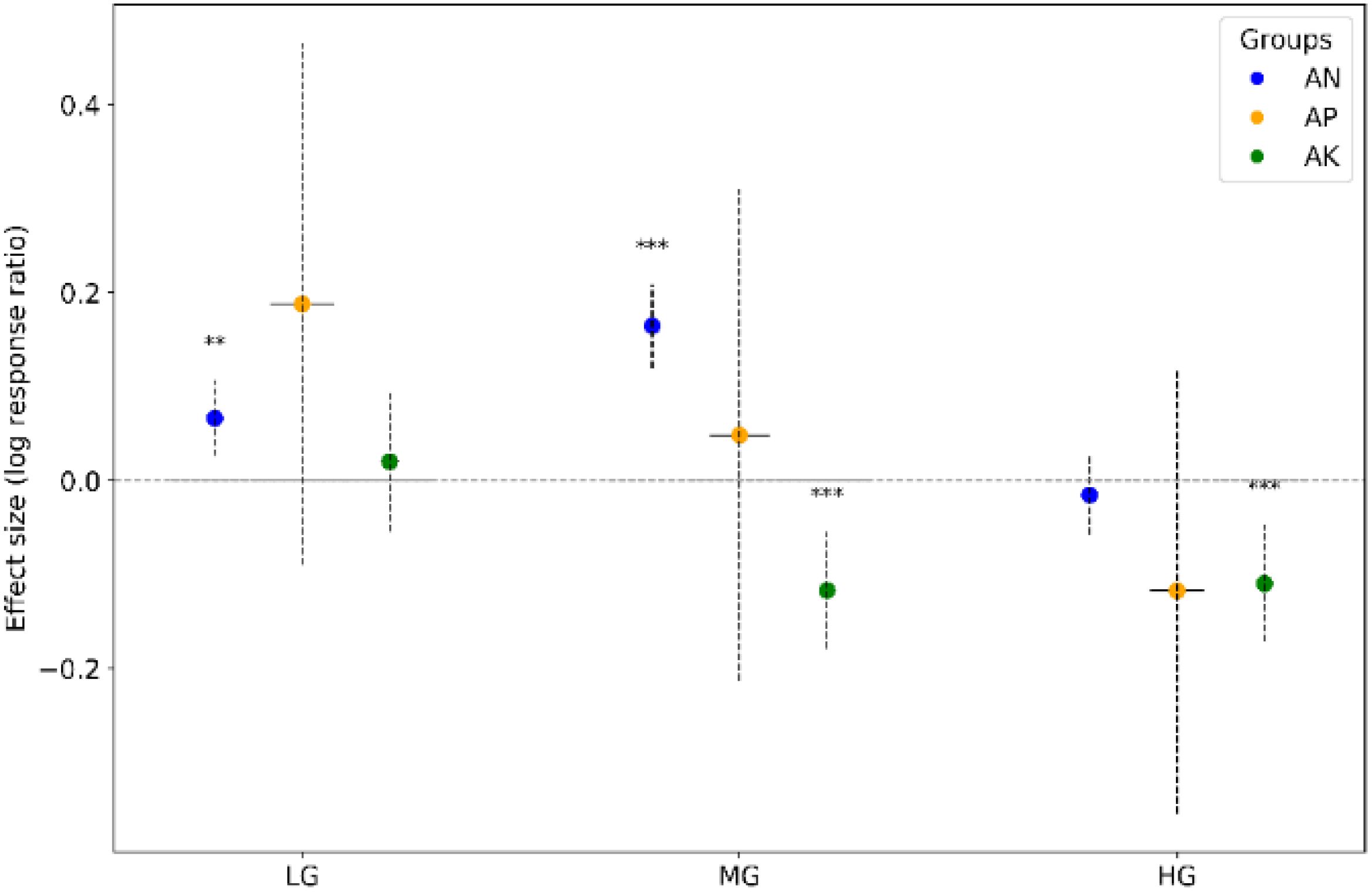
Figure 4. Effect sizes of soil available nutrients under different grazing intensities. Note, effect sizes of available nitrogen (AN), phosphorus (AP), and potassium (AK) under light (LG), moderate (MG), and heavy grazing (HG). Error bars represent standard deviations. Asterisks (*) indicate significant changes.
Heterogeneity analysis of effect size on available nutrients and optimal model selections
Grazing impacts soil nutrient dynamics in alpine grasslands differently depending on the nutrient and environmental factors. Temperature significantly influences reducing the effect of grazing on available nitrogen (P = 0.01, Figure 5) and increasing the effect size of available potassium (P < 0.0001, Figure 6), making it a key driver under climate change scenarios. In contrast, total nitrogen, total phosphorus, total potassium, precipitation, and soil organic carbon showed no significant effects on nutrient dynamics, highlighting their limited role in regulating available nitrogen, phosphorus, and potassium under grazing conditions (Figure 7). These results emphasize the critical role of temperature in nutrient cycling, especially in the context of climate warming.
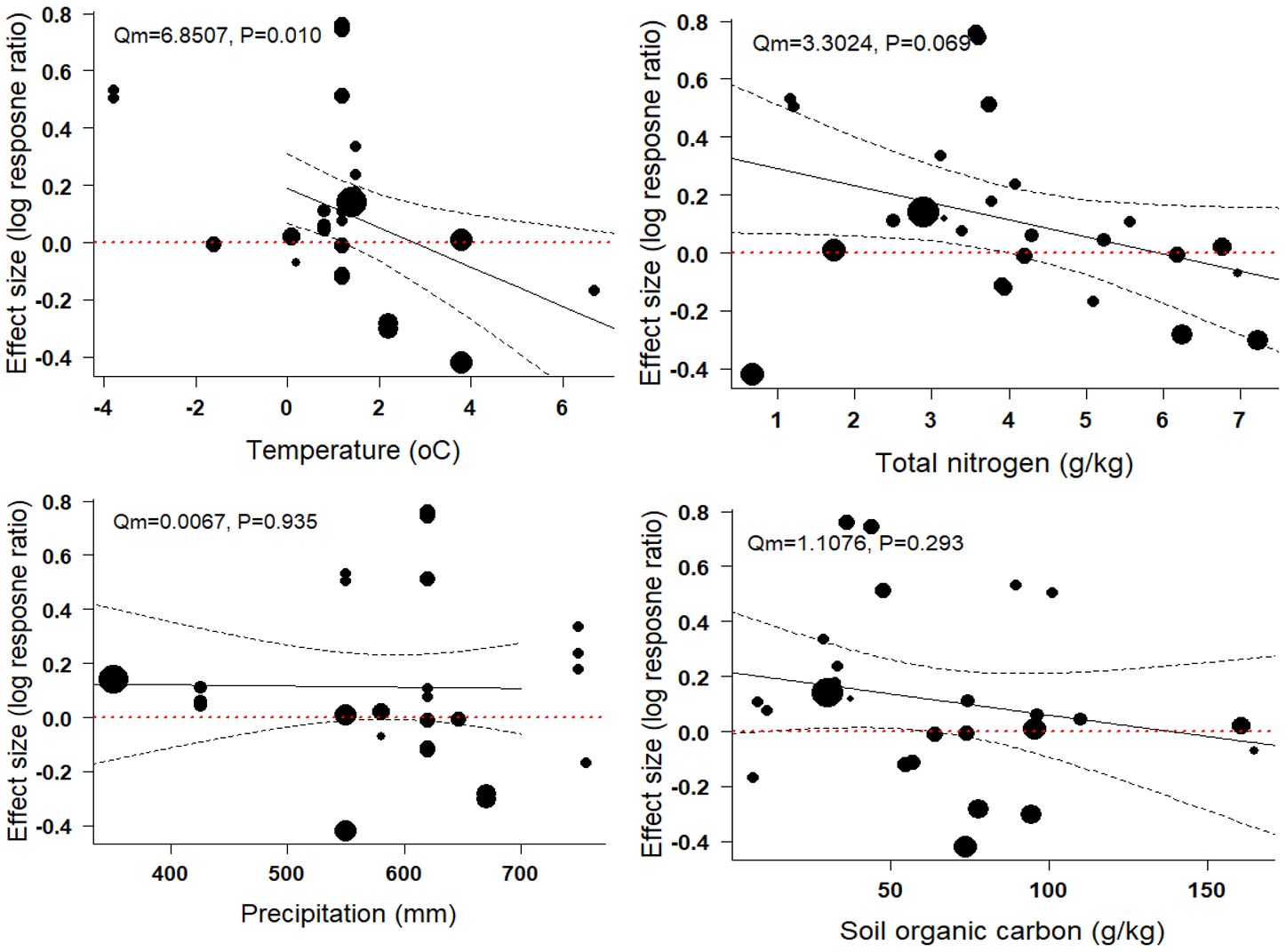
Figure 5. Analysis of factors influencing effect size of available nitrogen in grazed grassland soils.
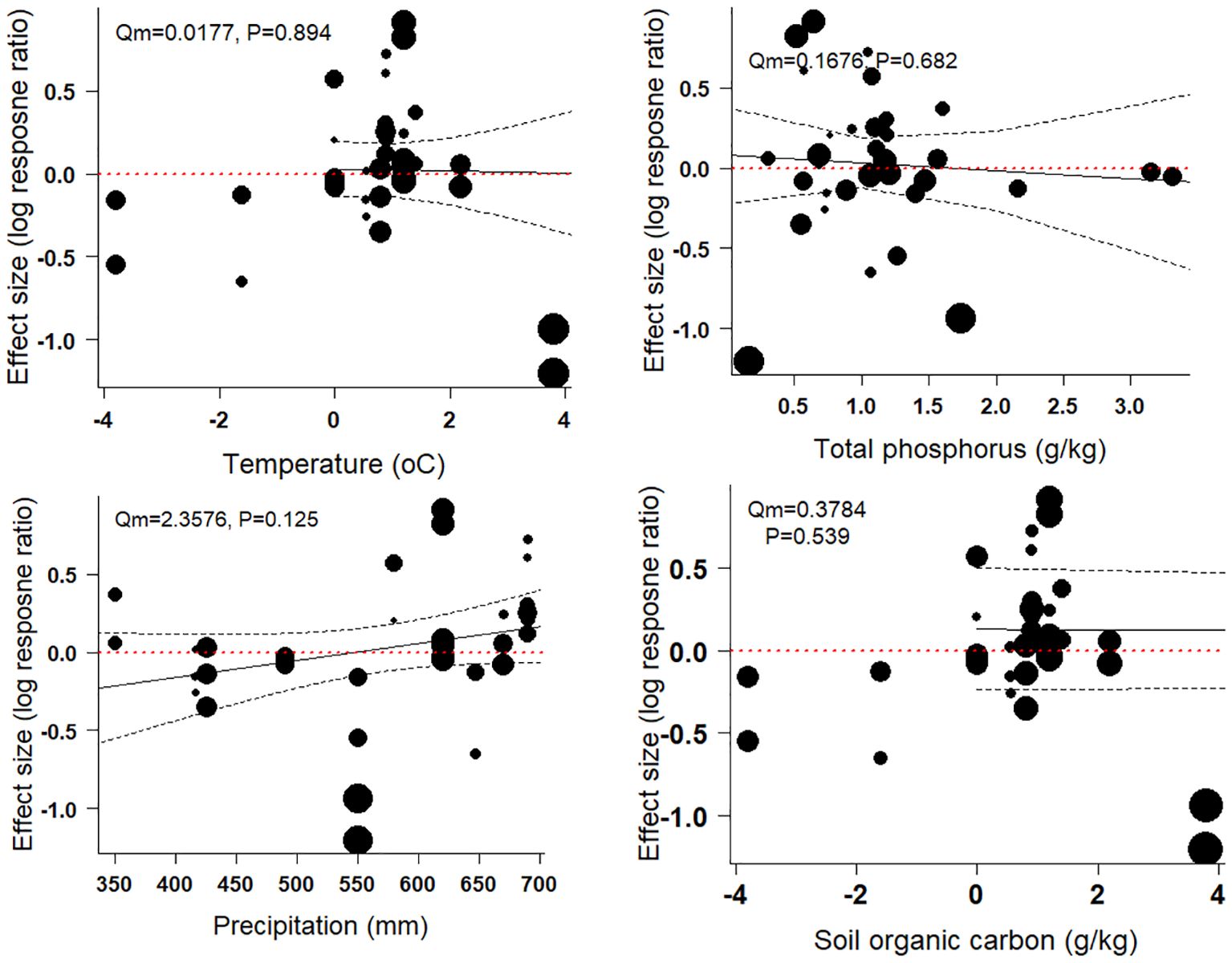
Figure 6. Analysis of factors influencing the effect size of available potassium in grazed grassland soils.
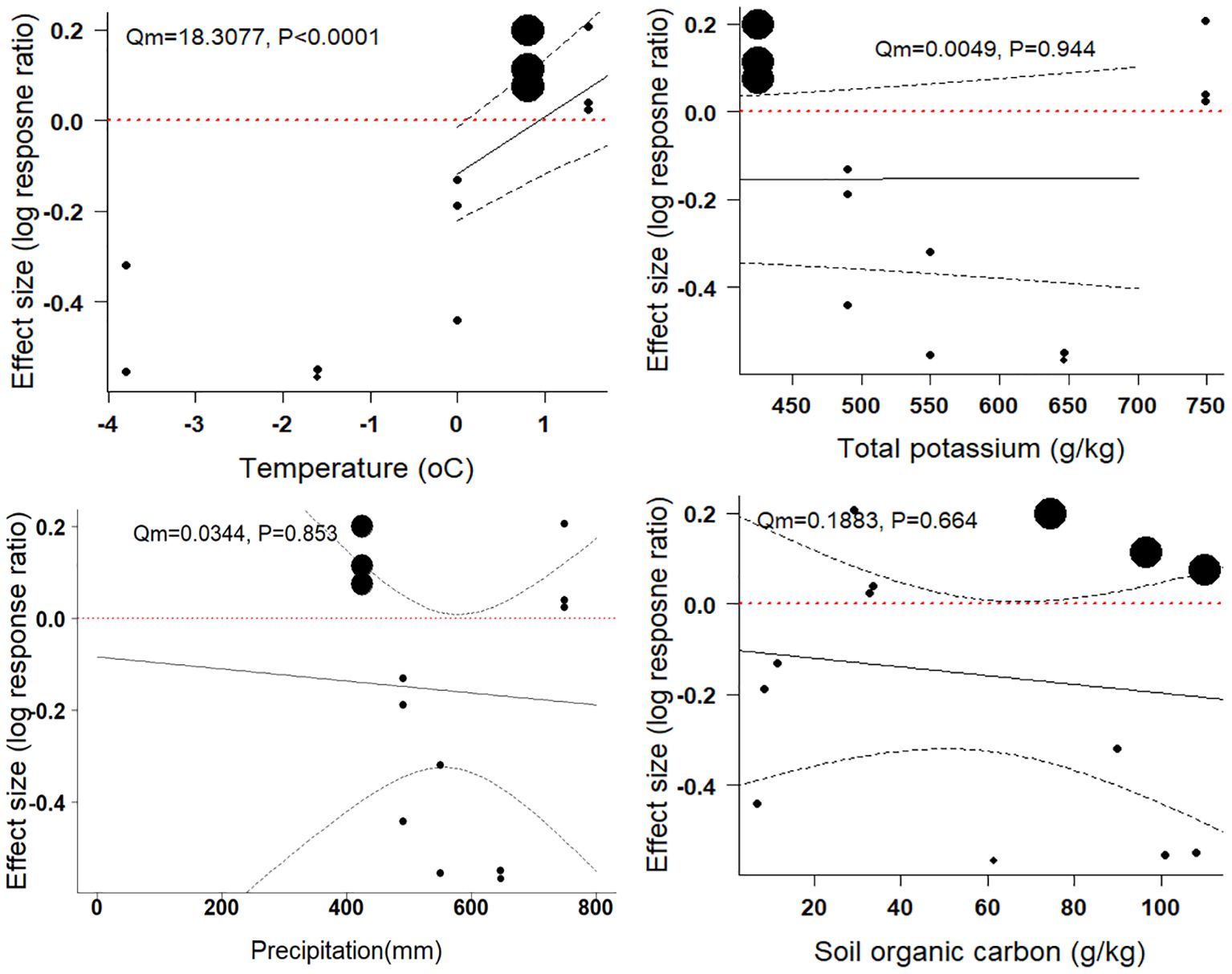
Figure 7. Analysis of factors influencing the effect size of available phosphorus in grazed grassland soils.
The mixed-effects model shows that soil organic carbon and temperature significantly affect the effect size of grazing on AN. The model explains 39.57% of the variance in effect size, and the high I² value of 92.54% indicates substantial heterogeneity (Table 1), reflecting considerable variability among studies. Precipitation explained only 6.51% of AP variance. The high I² value of 96.22% again indicates substantial heterogeneity. temperature significantly affects the effect size of AK, explaining 67.28% of the variance, with a lower but still high I² value of 83.35%.
Discussion
Effects of grazing disturbance and grazing density on the soil available nutrient contents in grasslands
This study demonstrated that grazing activity significantly increased available nitrogen (AN) in alpine grassland soils by approximately 11.9%, while the effect on available phosphorus (AP) was not statistically significant, resulting in a minor increase of 2.4%. Conversely, grazing led to a marked reduction in available potassium (AK) by 14.5% across the Tibetan Plateau. This study found that light grazing improves soil nutrient levels, while moderate grazing has mixed effects. In contrast, heavy grazing generally reduces key soil nutrients. Therefore, light grazing should be recommended as the main grazing strategy.
These findings highlight the differential impacts of grazing on soil nutrient availability, with significant implications for nutrient cycling and ecosystem management in fragile alpine environments. Similarly, soil nitrogen content was the highest under light grazing on the Eastern Tibetan Plateau (16). Grazing substantially increased grassland AN from 117.39 to 129.35 mg/kg and AP from 3.75 to 4.50 mg/kg (23). Grazing enhanced alpine meadow AN from 23.53 to 23.83 mg/kg on the Northeast of the Tibetan Plateau (24). The alpine meadow soil available nitrogen content was 26.07, 26.62, and 24.61 mg/kg in light grazing, moderate grazing, and heavy grazing, respectively (25). Similarly, a previous study indicated that heavy grazing decreased soil nitrogen in the Eastern Tibetan Plateau (26). This was because, under light and moderate grazing conditions, the nitrogen mineralization process in the soil was enhanced by stimulated microbial activity, which accelerated the decomposition of soil organic matter and increased the release of available nitrogen (25). However, heavy grazing inhibited microbial activity by reducing the input of plant and root residues, leading to a decrease in nitrogen mineralization rates (27). Furthermore, grazing decreased AP and exchanged potassium by 33.89% and 41.02%, respectively, in the central Ethiopian highlands (28). Additionally, grazing reduced the soil AP of grasslands from 6.96 to 5.76 mg/kg on the Tibetan Plateau (12). The increase in soil potassium under light grazing is particularly significant, mainly due to the greater amount of potassium left in plant residues, but in long-term high grazing treatments, the availability of potassium tends to decrease, primarily due to the reduced input of biomass potassium (29). Thus, our study offers a more comprehensive understanding than previous research, providing a clearer basis for the sustainable management of alpine grasslands on the Tibetan Plateau.
Analysis of the factors driving grazing on soil available nutrient contents in grasslands of the Tibetan Plateau
Grazing is a traditional grassland management practice that significantly alters nutrient cycling processes within the ecosystem (23, 30). Concentrations of plant nutrients are mainly derived from soil nutrients (30, 31). Soil available nutrients are derived from microbial mineralization and decomposition and are driven by multiple factors, such as the environment, climate, and physiochemical properties.
Furthermore, soil nutrients appeared to play crucial roles in root decomposition, which increased at lower altitudes in the Bromus inermis grasslands of Northwest China (32). In this study, the mixed-effects model highlights temperature as a critical determinant of grazing impacts on soil nutrient dynamics, particularly by reducing available nitrogen and increasing available potassium, underscoring its pivotal role under ongoing climate change scenarios. These findings highlight the importance of incorporating temperature variability into grazing management strategies to predict and mitigate grazing impacts on nutrient cycling in alpine grasslands, contributing to greater ecosystem resilience under climate change. Temperature was identified as a key driver, reducing available nitrogen (AN) and increasing available potassium (AK) by accelerating organic matter decomposition and nutrient mineralization (6). Given its significant influence, addressing temperature variability is crucial for effective nutrient management and the sustainability of fragile alpine ecosystems amid climate change (14).
The significant heterogeneity observed in the mixed-effects model, indicated by high I² values (e.g., 92.54% for AN and 83.35% for AK), reflects the complexity of the underlying research. This heterogeneity likely arises from variations in geographical regions, soil types, grazing intensities, and diverse environmental contexts across the studies, leading to substantial variability in the outcomes (2). Such variability underscores the complex interactions between grazing and soil nutrient dynamics, influenced by multiple interrelated factors that differ depending on the specific study environment (19).
Conclusions
This study highlights the complex impacts of grazing intensity on soil nutrient dynamics in alpine grasslands of the Tibetan Plateau. Light grazing was shown to enhance the availability of key nutrients such as available nitrogen, available phosphorus, and available potassium, supporting the hypothesis that moderate grazing disturbances can improve soil nutrient cycling. In contrast, heavy grazing led to significant nutrient depletion, emphasizing the detrimental effects of overgrazing on fragile alpine ecosystems. The significant influence of temperature on nutrient dynamics, particularly reducing available nitrogen and increasing available potassium, underscores the importance of incorporating climate variability into grazing management practices, especially under ongoing climate change scenarios. Given the high heterogeneity observed across studies, driven by geographical, environmental, and management differences, it is crucial to develop region-specific grazing strategies. Ultimately, adopting light grazing as a sustainable management practice could enhance soil fertility and ensure the long-term productivity and resilience of alpine grasslands on the Tibetan Plateau.
Data availability statement
The original contributions presented in the study are included in the article/Supplementary Material. Further inquiries can be directed to the corresponding author.
Author contributions
TZ: Data curation, Software, Writing – original draft. HY: Investigation, Software, Writing – original draft. YD: Investigation, Software, Writing – review & editing.
Funding
The author(s) declare financial support was received for the research, authorship, and/or publication of this article. This work was funded by National Key R&D Program of China (2023YFF1304302), and top talents of the Kunlun talents.
Conflict of interest
The authors declare that the research was conducted in the absence of any commercial or financial relationships that could be construed as a potential conflict of interest.
Generative AI statement
The author(s) declare that no Generative AI was used in the creation of this manuscript.
Publisher’s note
All claims expressed in this article are solely those of the authors and do not necessarily represent those of their affiliated organizations, or those of the publisher, the editors and the reviewers. Any product that may be evaluated in this article, or claim that may be made by its manufacturer, is not guaranteed or endorsed by the publisher.
Supplementary material
The Supplementary Material for this article can be found online at: https://www.frontiersin.org/articles/10.3389/fsoil.2024.1525837/full#supplementary-material
References
1. Liu J, Milne RI, Cadotte MW, Wu ZY, Provan J, Zhu GF, et al. Protect Third Pole’s fragile ecosystem. Science. (2018) 362:1368–8. doi: 10.1126/science.aaw0443
2. Li W, Xu Q, Zhou H, Du Y. Grazing significantly increases N2O emission rates in alpine meadows of the Tibetan Plateau. Front Environ Sci. (2022) 10:e920154. doi: 10.3389/fenvs.2022.920154
3. Chen DL, Xu B, Yao TD, Guo ZT, Cui P, Chen F, et al. Assessment of past, present and future environmental changes on the Tibetan Plateau. Shinese Sci Bull. (2015) 60:3025–35. doi: 10.1360/n972014-01370
4. Fu B, Ouyang Z, Shi P, Fan J, Wang X, Zheng H, et al. Current condition and protection strategies of Qinghai-Tibet Plateau ecological security barrier. Bull Chin Acad Sci. (2021) 36:1298–306. doi: 10.16418/j.issn.1000-3045.20210919001
5. Wang Y, Lv W, Xue K, Wang S, Zhang L, Hu R, et al. Grassland changes and adaptive management on the Qinghai–Tibetan Plateau. Nat Rev Earth Environ. (2022) 3:668–83. doi: 10.1038/s43017-022-00330-8
6. Liu M, Sun J, Xu X. Imbalance of soil elements drives the degradation of alpine grasslands. Chin J Ecol. (2020) 39:2574–80. doi: 10.13292/j.1000-4890.202008.006
7. Moore JW, Schindler DE. Getting ahead of climate change for ecological adaptation and resilience. Science. (2022) 376:1421–6. doi: 10.1126/science.abo3608
8. Mori A, Hojito M. Methane and nitrous oxide emissions due to excreta returns from grazing cattle in Nasu, Japan. Grassland Sci. (2015) 61:109–20. doi: 10.1111/grs.2015.61.issue-2
9. Du YG, Ke X, Guo XW, Cao GM, Zhou HK. Soil and plant community characteristics under long-term continuous grazing of different intensities in an alpine meadow on the Tibetan plateau. Biochem Syst Ecol. (2019) 85:72–5. doi: 10.1016/j.bse.2019.05.012
10. Lang M, Li P, Long GQ, Yuan FJ, Yu YJ, Ma ED, et al. Grazing rest versus no grazing stimulates soil inorganic N turnover in the alpine grasslands of the Qinghai-Tibet plateau. Catena. (2021) 204:105412. doi: 10.1016/j.catena.2021.105382
11. Zhao L, Zhang X, Xiong B, Zhang J. Influence of fencing and grazing on the soil and standing vegetation changes in HorQin sandy grassland. Ecol Environ Sci. (2017) 26:971–7. doi: 10.16258/j.cnki.1674-5906.2017.06.009
12. Zhang Y, Gao Q, Ganjurjav H, Dong S, Zheng Q, Ma Y, et al. Grazing exclusion changed the complexity and keystone species of alpine meadows on the Qinghai-Tibetan Plateau. Front Ecol Evol. (2021) 9:1877. doi: 10.3389/fevo.2021.638157
13. Zhou H, Zhao X, Zhou L, Liu W, Li Y, Tang Y. A study on correlations between vegetation degradation and soil degradation in the alpine meadow of the Qinghai-Tibetan Plateau. Acta Prataculturae Sin. (2005) 14:31–40. doi: 1004-5759(2005)03-0031-10
14. Pavlu K, Kassahun T, Nwaogu C, Pavlu L, Gaisler J, Homolka P, et al. Effect of grazing intensity and dung on herbage and soil nutrients. Plant Soil Environ. (2019) 65:343–8. doi: 10.17221/177/2019-PSE
15. Badia D, Fillat F, Marti C, Aguirre J, Gomez D, Sanchez JR. Soil chemistry in long-term livestock camping areas in Pyrenean summer pastures. Agrochimica. (2008) 52:189–99. doi: WOS:000258448900005
16. Mipam TD, Chen S, Liu J, Miehe G, Tian L. Short-term yak-grazing alters plant-soil stoichiometric relations in an alpine meadow on the eastern Tibetan Plateau. Plant Soil. (2021) 458:125–37. doi: 10.1007/s11104-019-04401-6
17. Philippot L, Andert C, Bru D, Hallin S. Importance of denitrifiers lacking the genes encoding the nitrous oxide reductase for N2O emissions from soil. Global Change Biol. (2011) 17:1497–504. doi: 10.1111/j.1365-2486.2010.02334.x
18. Sirami C, Gross N, Baillod AB, Bertrand C, Carrié R, Hass A, et al. Increasing crop heterogeneity enhances multitrophic diversity across agricultural regions. Proc Natl Acad Sci. (2019) 116:16442–7. doi: 10.1073/pnas.1906419116
19. Lycus P, Soriano-Laguna MJ, Kjos M, Richardson DJ, Gates AJ, Milligan DA, et al. A bet-hedging strategy for denitrifying bacteria curtails their release of N2O. Proc Natl Acad Sci. (2018) 115:11820–5. doi: 10.1073/pnas.1805000115
20. Lai L, Kumar S. A global meta-analysis of livestock grazing impacts on soil properties. PloS One. (2020) 15:0236638. doi: 10.1371/journal.pone.0236638
21. Zhan T, Zhang Z, Sun J, Liu M, Zhang X, Peng F, et al. Meta-analysis demonstrating that moderate grazing can improve the soil quality across China’s grassland ecosystems. Appl Soil Ecol. (2020) 147:103438. doi: 10.1016/j.apsoil.2019.103438
22. Benítez-López A, Alkemade R, Schipper AM, Ingram DJ, Verweij PA, Eikelboom JAJ , et al. Hunting-induced defaunation: The impact of hunting on tropical mammal and bird populations. Science. (2017) 356:180–3. doi: 10.1126/science.aaj1891
23. Hou D, Guo K, Liu C. Asymmetric effects of grazing intensity on macroelements and microelements in grassland soil and plants in Inner Mongolia. Ecol Evol. (2020) 10:8916–26. doi: 10.1002/ece3.v10.16
24. Dai LC, Fu RR, Guo XW, Du YG, Lin L, Zhang FW, et al. Long-term grazing exclusion greatly improves carbon and nitrogen store in an alpine meadow on the northern Qinghai-Tibet Plateau. Catena. (2021) 197:104995. doi: 10.1016/j.catena.2020.104955
25. Zhu J, Li H, He H, Mao S, Li Y. Analysis of the variation characteristics and controlling factors of soil rapidly available nitrogen in Haibei alpine meadow under grazing pressure gradient. J Glaciol Geocryol. (2015) 37:1660–9. doi: 10.1007/s0435-202207-1641-10
26. Ma X, Asano M, Tamura K, Zhao R, Nakatsuka H, Wuyunna, et al. Physicochemical properties and micromorphology of degraded alpine meadow soils in the Eastern Qinghai-Tibet Plateau. Catena. (2020) 194:104649. doi: 10.1016/j.catena.2020.104649
27. Gao C, Qi Z, Zheng H, Chen X, Qin J, Hao J, et al. Response of soil available nutrients and microbial characteristics to short-term grazing intensities. Acta Agrestia Sin. (2022) 30:1641–50. doi: 10.1007/s0435-202207-1641-10
28. Adimassu Z, Tamene L, Degefie DT. The influence of grazing and cultivation on runoff, soil erosion, and soil nutrient export in the central highlands of Ethiopia. Ecol Processes. (2020) 9:23–34. doi: 10.1186/s13717-020-00230-z
29. Almeida TF, Carvalho JK, Reid E, Martins AP, Bissani CA, Bortoluzzi EC, et al. Forms and balance of soil potassium from a long-term integrated crop-livestock system in a subtropical Oxisol. Soil Tillage Res. (2021) 207:104864. doi: 10.1016/j.still.2020.104864
30. Mosier S, Apfelbaum S, Byck P, Ippolito J, Cotrufo MF. Improvements in soil properties under adaptive multipaddock grazing relative to conventional grazing. Agron J. (2022) 114:2584–97. doi: 10.1002/agj2.v114.4
31. Tian L, Zhao L, Wu X, Fang H, Zhao Y, Yue G, et al. Vertical patterns and controls of soil nutrients in alpine grassland: Implications for nutrient uptake. Sci Total Environ. (2017) 607:855–64. doi: 10.1016/j.scitotenv.2017.07.080
Keywords: nutrient cycling, ecosystem management, available nitrogen, grazing intensity, alpine meadows
Citation: Zhou T, Yang H and Du Y (2025) Effects of grazing on alpine grassland soil available nutrients across the Tibetan Plateau. Front. Soil Sci. 4:1525837. doi: 10.3389/fsoil.2024.1525837
Received: 10 November 2024; Accepted: 13 December 2024;
Published: 14 January 2025.
Edited by:
Wenjuan Huang, Iowa State University, United StatesReviewed by:
Quan Quan, Cornell University, United StatesXiong Fang, Jiangxi Agricultural University, China
Copyright © 2025 Zhou, Yang and Du. This is an open-access article distributed under the terms of the Creative Commons Attribution License (CC BY). The use, distribution or reproduction in other forums is permitted, provided the original author(s) and the copyright owner(s) are credited and that the original publication in this journal is cited, in accordance with accepted academic practice. No use, distribution or reproduction is permitted which does not comply with these terms.
*Correspondence: Yangong Du, eWdkdUBud2lwYi5jYXMuY24=
 Tongyong Zhou
Tongyong Zhou Hui Yang
Hui Yang Yangong Du
Yangong Du